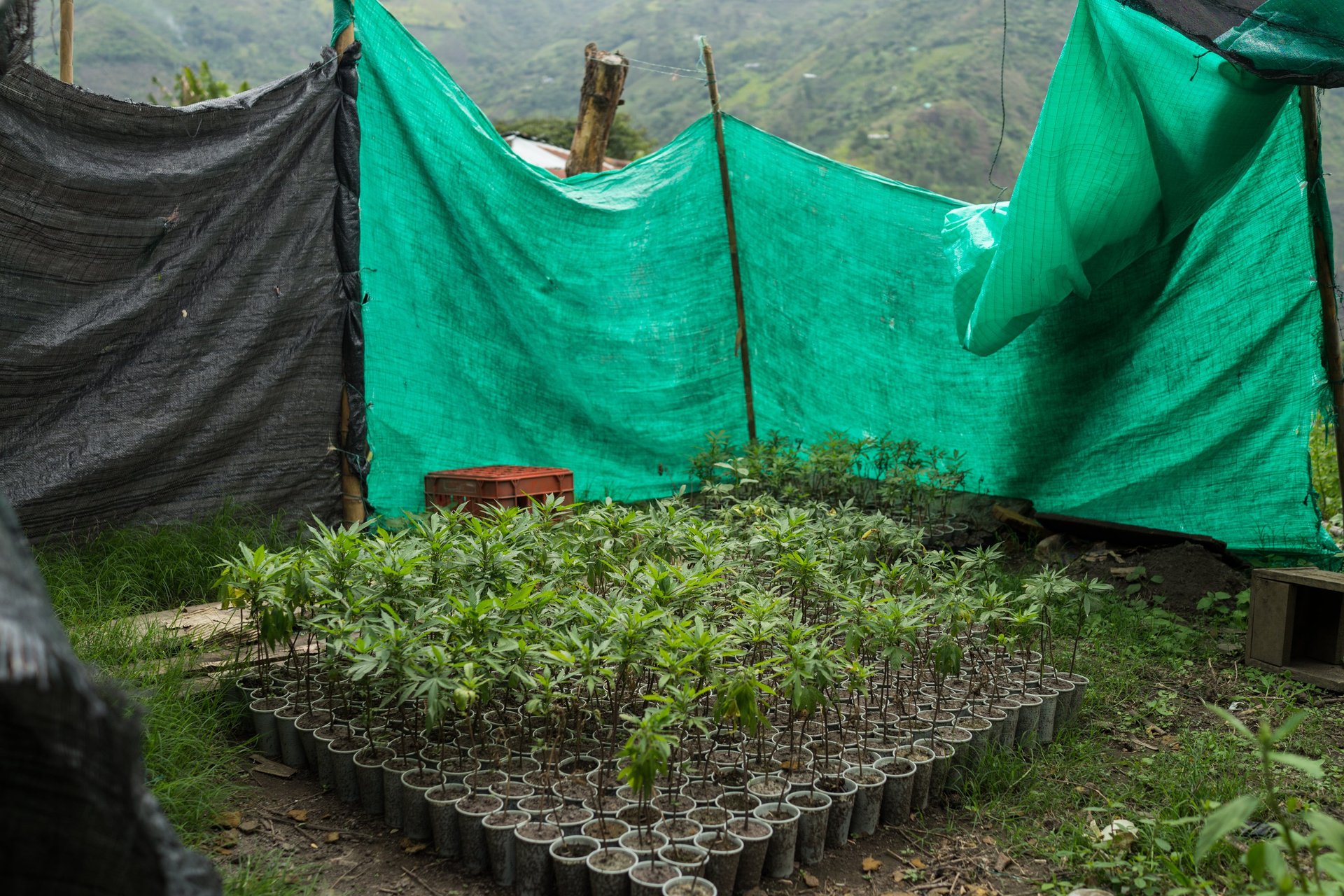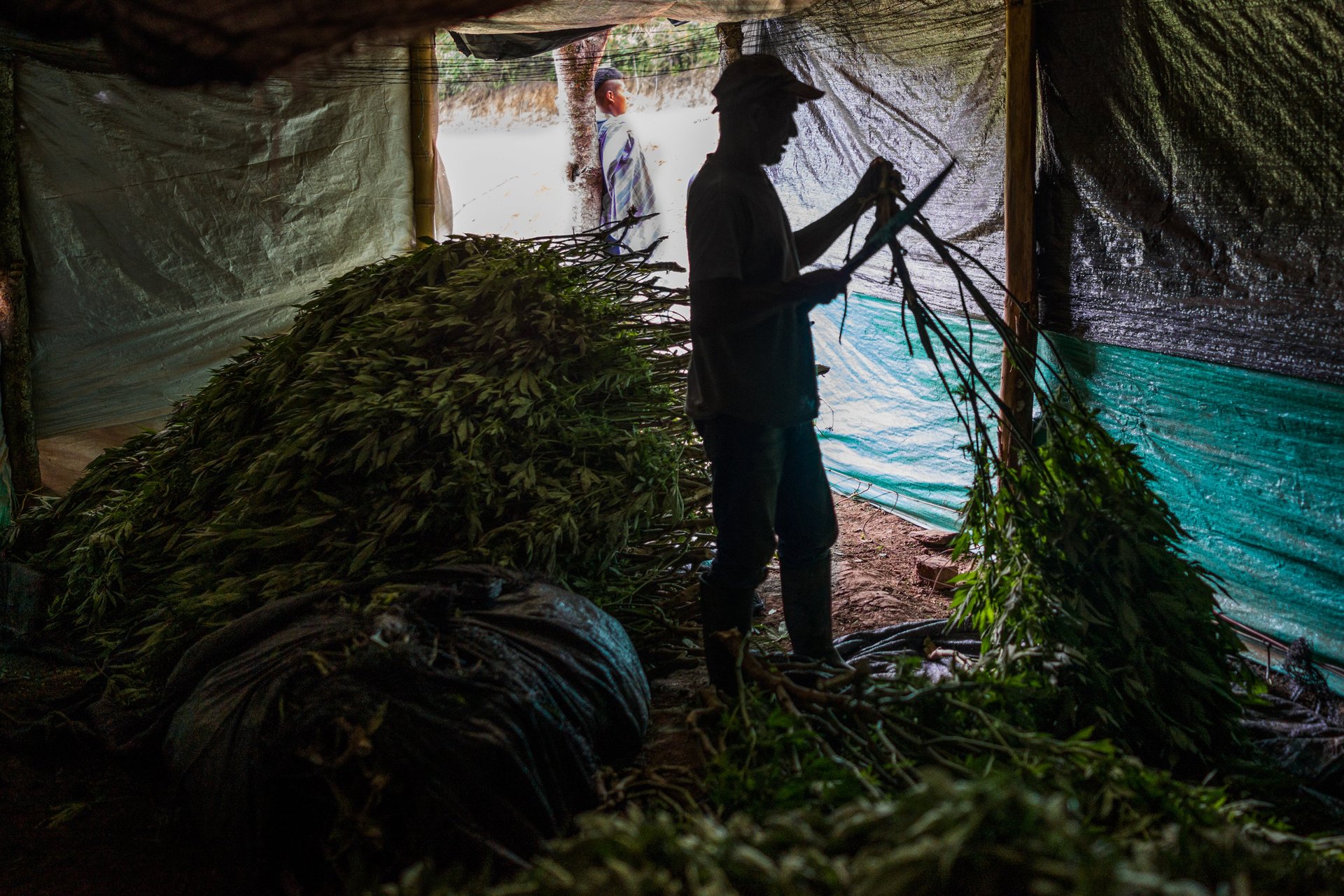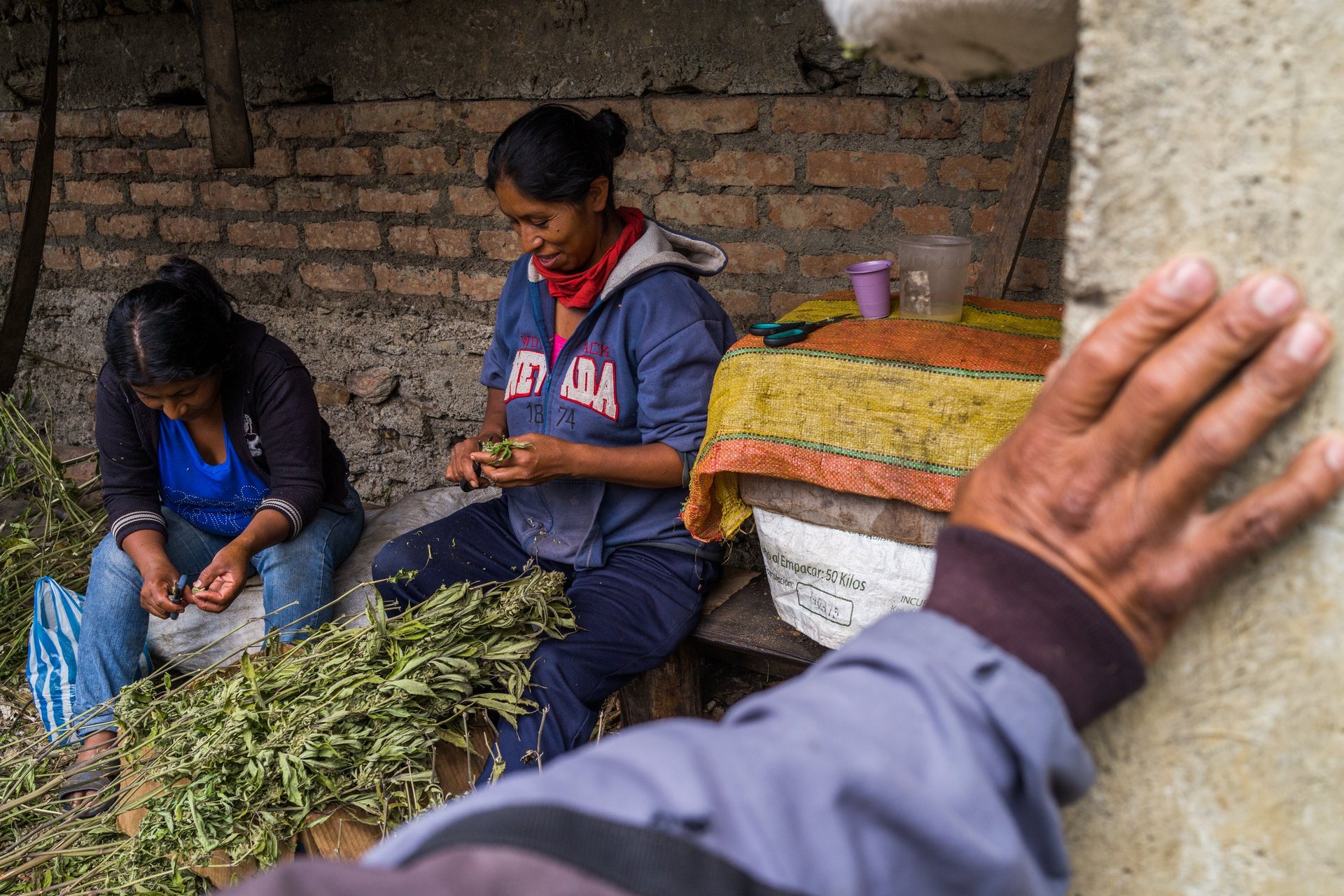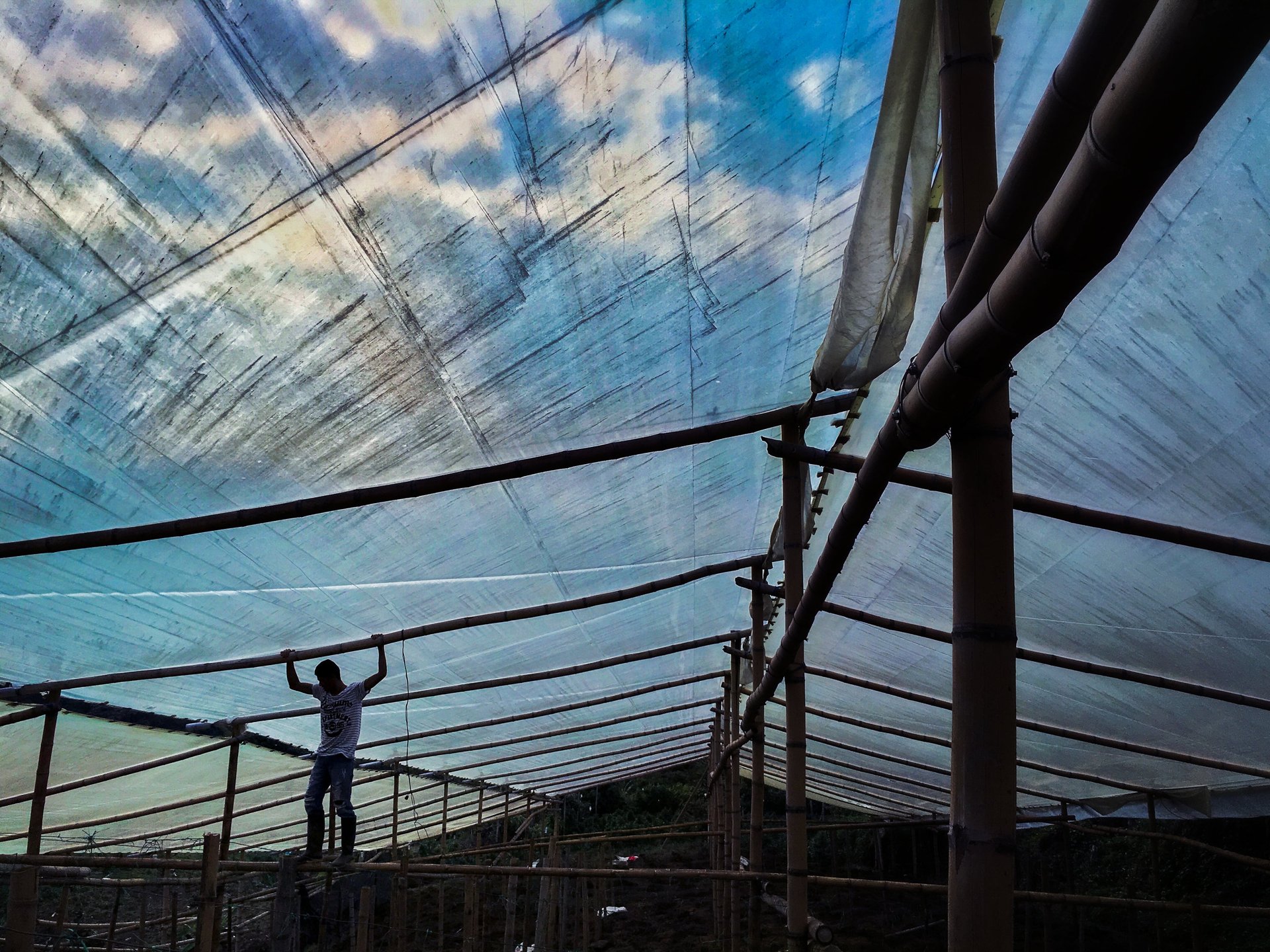Photos: Colombia’s “lost city of marijuana”
The jungle around Toribío in southwestern Colombia is filled with vast pot plantations that stretch as far as the eye can see. At night, the greenhouse lights glow like a sea of fluorescent plankton.
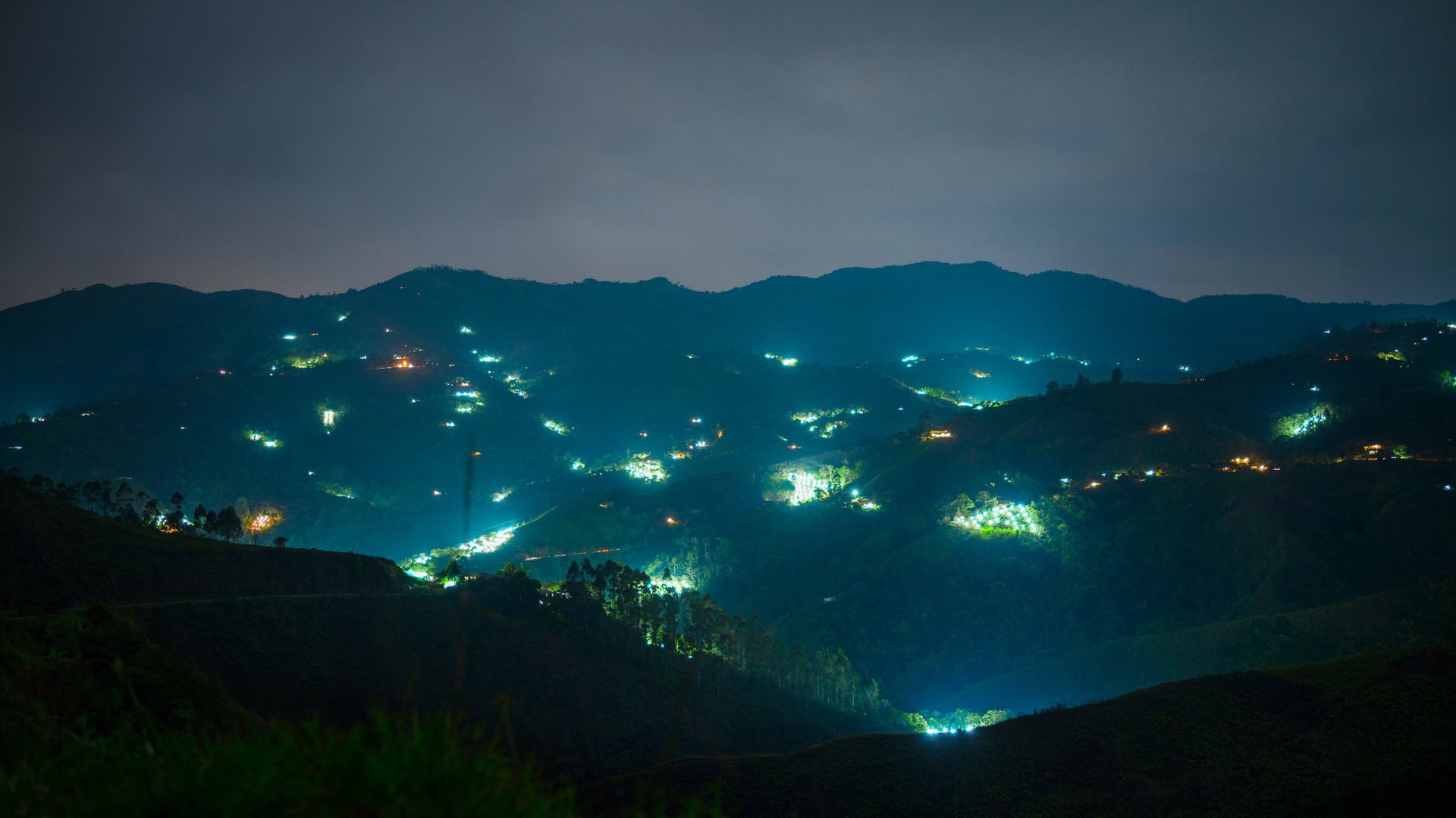

The jungle around Toribío in southwestern Colombia is filled with vast pot plantations that stretch as far as the eye can see. At night, the greenhouse lights glow like a sea of fluorescent plankton.
Colombia’s 50-year civil war devastated this region. Fighting between the Colombian army and the Revolutionary Armed Forces of Colombia (FARC) displaced 8,800 people in the municipality of roughly 30,000 inhabitants, and killed nearly 300, according to the government’s victim registry (link in Spanish.)
But it also gave the residents a way to earn a living. The fighting turned the hilly terrain around Toribío and adjacent municipalities into a no-man’s land that government authorities dared not enter. The locals, most of them members of the Nasa indigenous people, tended the marijuana plantations while the army and the leftist guerrillas battled it out. The so-called “lost city of marijuana” has been documented (link in Spanish) by various journalists, including Nicolas Enriquez, a photographer who spent nearly two months shooting life in Toribío.
And now that the two sides are close to a peace deal, many of those pot farmers fear their livelihood is about to be destroyed. They, and many similar communities around the country, are likely to put up a fight that could disrupt or even derail the peace process.
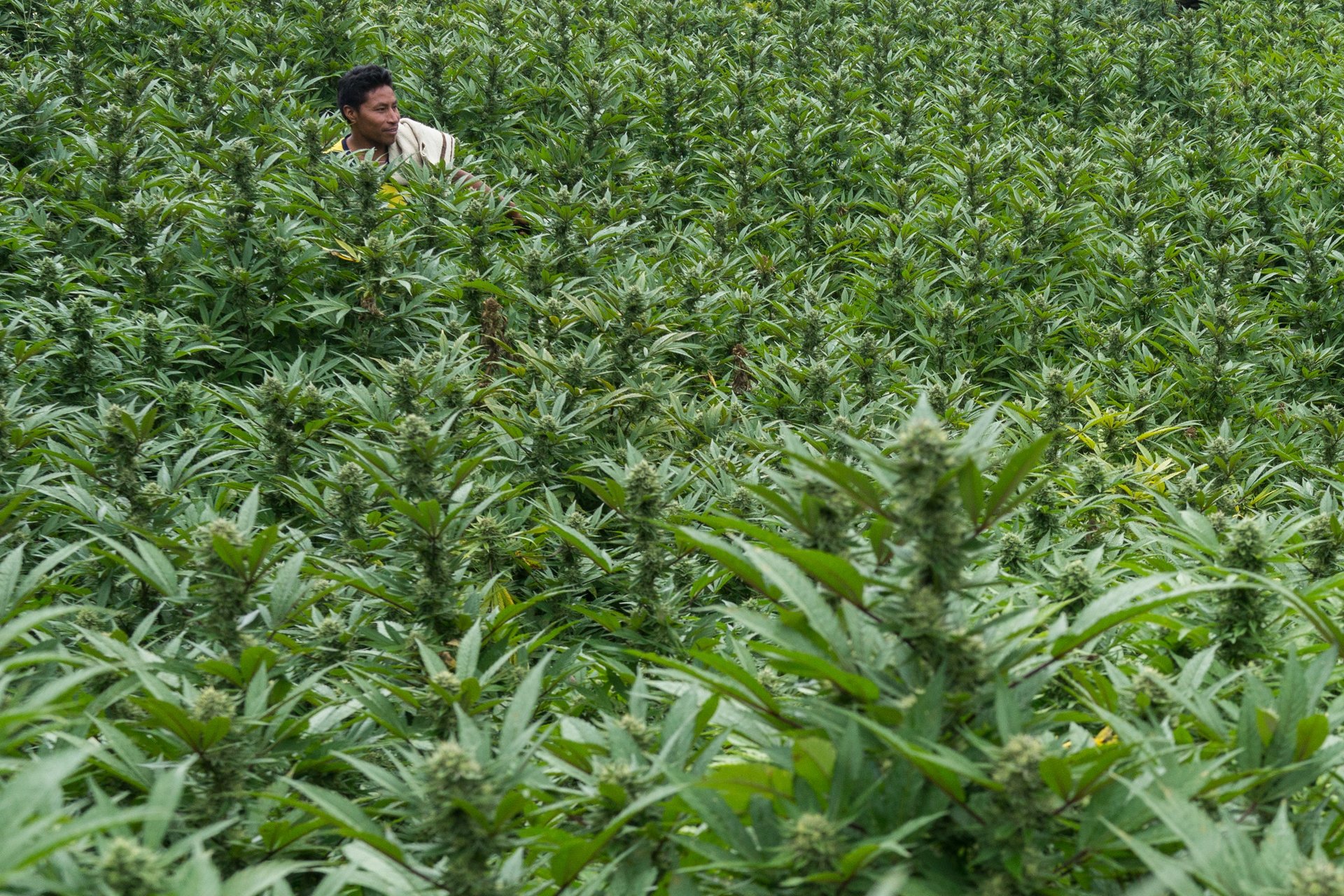
Crop substitution? No thanks
As part of the ongoing peace accords (Spanish) being negotiated in Havana, Cuba, the two sides have already agreed on an ambitious crop-substitution program that calls for the complete eradication of marijuana and other plants sold illegally.
Toribío residents welcome the prospect of peace, but they say that even if the fighting stops, growing marijuana will remain the best way to feed their families. The local economy has been wrecked, both by the war and by industrial agriculture. Roughly a third of the working-age population doesn’t have a steady job, according to a 2013 government assessment. (Spanish, pdf, pg. 123.) Their chances of getting one are slim, they say, with illiteracy present in 36% of households.
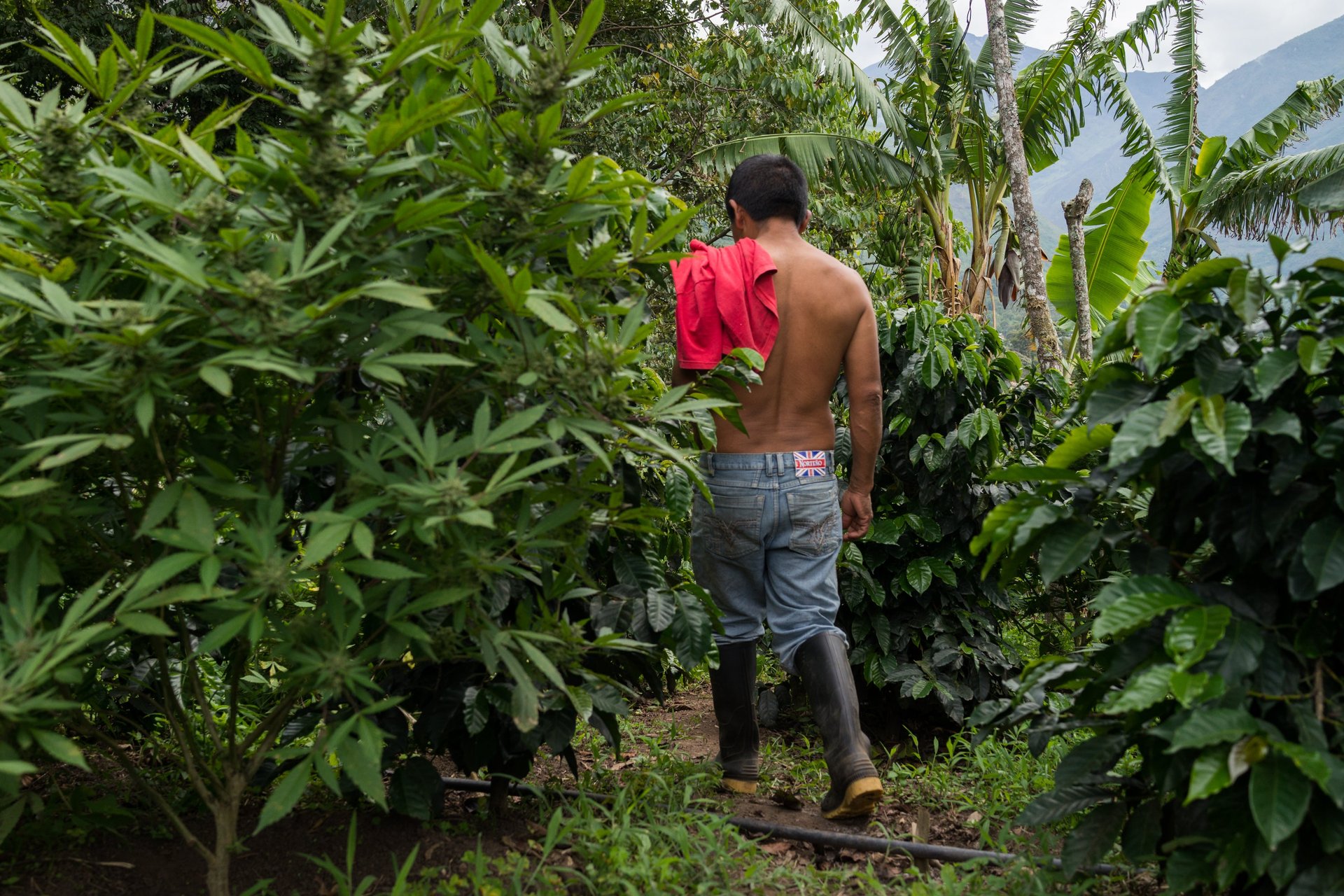
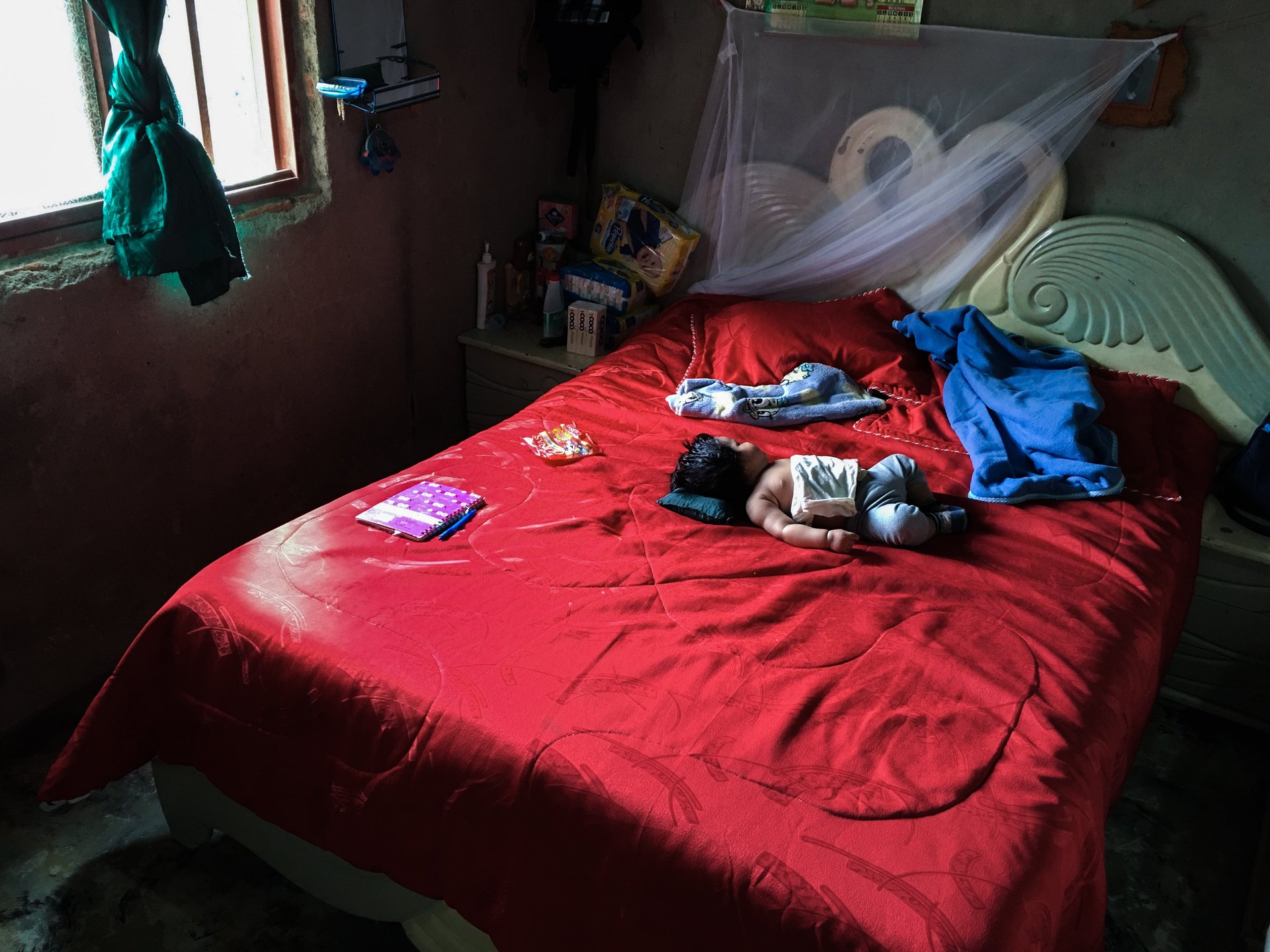
As a result, many of them turn to small-scale farming. Legal crops, such as tomato and coffee, don’t provide enough to live on, Sebastian, a 52-year-old farmer, told Enriquez, the photographer. There is no market to sell them in, he added. Most of the roads are in bad shape and rapidly deteriorating, the government assessment says. Pot, says Sebastian, “is still the best option.” With 1,000 plants, a grower can harvest around 60 kg (130 lb) of weed, each of which sells at a profit of 25,000 to 30,000 Colombian pesos ($8 to $10.)
The problem is that economies such as Toribío’s have been distorted by players like the FARC, says Daniel Mauricio Rico, a researcher who has studied crop substitution at the University of Maryland. The guerrillas offered a market for products like marijuana and coca, while blocking public development programs. If the government provided justice and safety, farmers would be able to sell legal crops profitably, without the need for any crop-substitution programs.
For the past few decades, though, such programs have been a big part of the strategy to fight the drug trade. Most of them have failed because the government agencies don’t work together to solve the complexities on the ground, says Rico. For example, an agency might provide seeds for a legal crop, but no help to improve local roads to bring the harvest to market.
Will this time be different?
The agreement (Spanish, pdf) between the government and the FARC on drugs represents a big shift in that approach. The new crop-substitution program promises a comprehensive package of government help to those who agree to stop cultivating coca and marijuana. That includes investment in infrastructure, subsidies and credit to create new industries, better education and health, and even vegetable gardens. The negotiating parties are also vowing to focus on going after big-time drug smugglers and money launderers, not poor peasants.
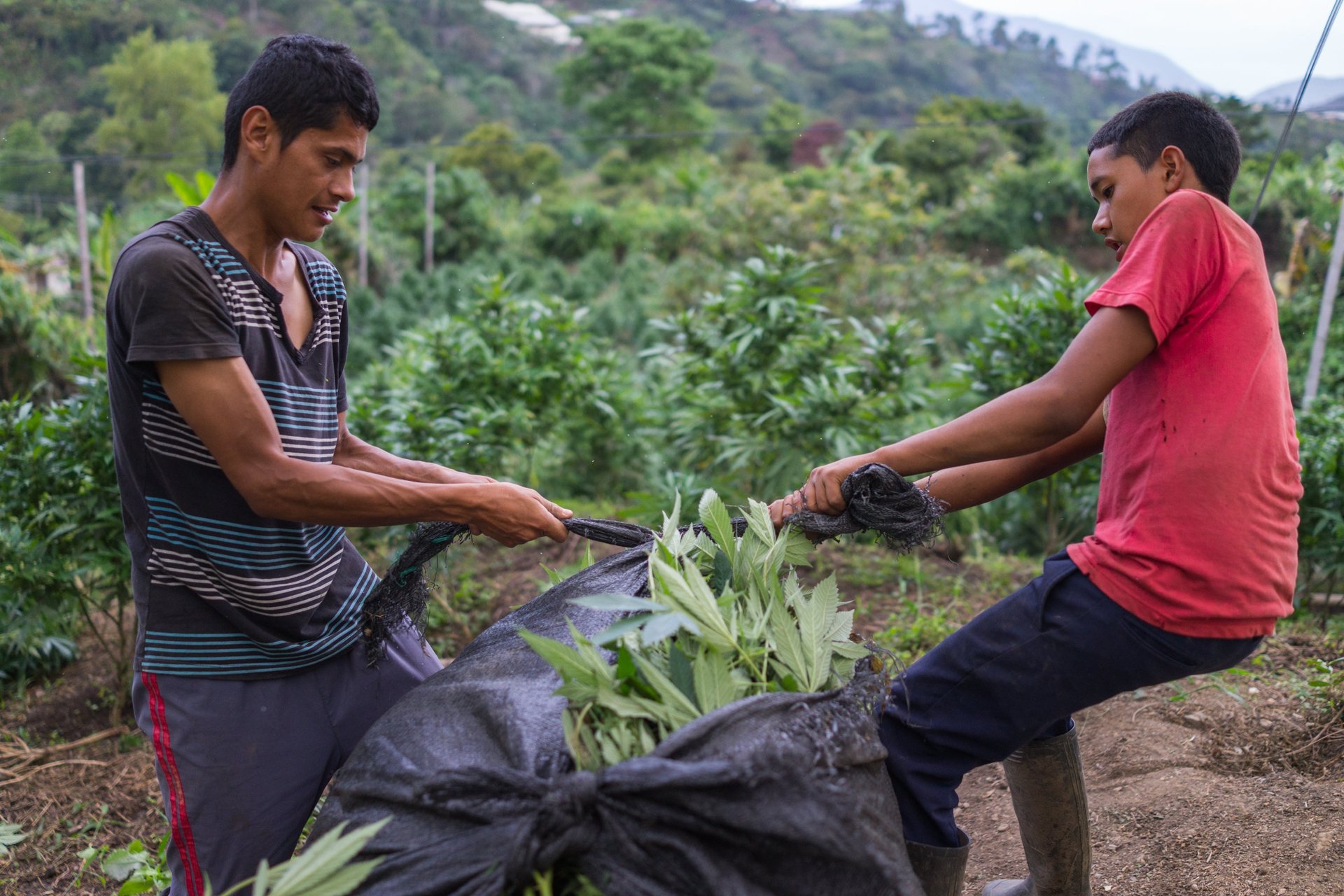
Still, the new plan repeats some of the mistakes of the past, according to some experts. Its goal is still the complete eradication of plants for illegal use. That policy led to Colombia’s militarization and practices such as the aerial spraying of herbicides, says Pedro José Arenas, who coordinates the Observatory of Crops and Producers Declared Illicit, a drug-policy discussion center that focuses on farming communities.
It’s a chicken-and-egg situation: Peasants have to first commit to getting rid of illegal plantations to get government assistance. But without the assistance, it’s hard for them to find an alternative way to make a living and they will be loath to quit growing pot, says Coletta Youngers, a senior fellow at the Washington Office on Latin America, a human rights non-profit.
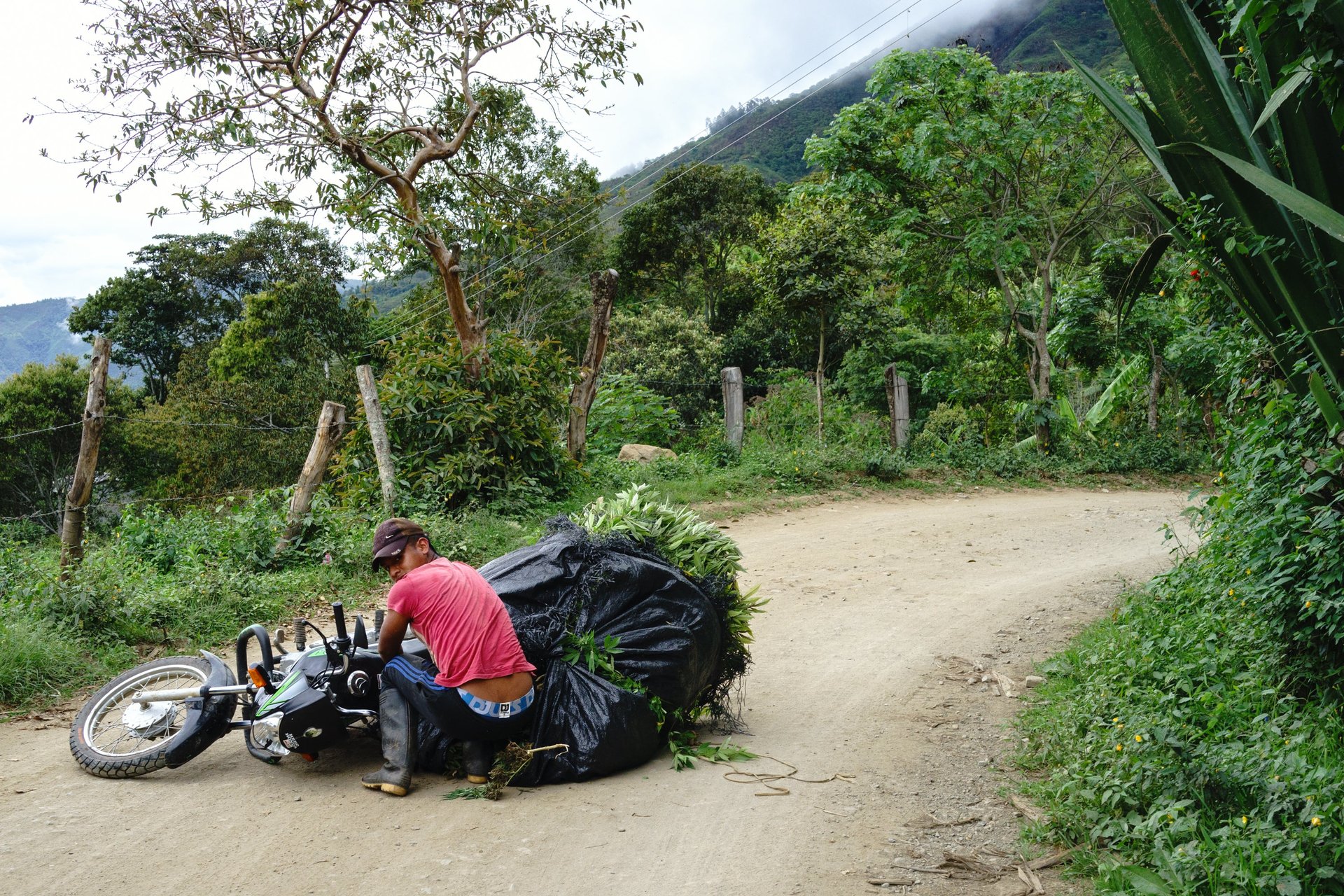
The plan is also extremely ambitious; one government adviser who asked not to be identified compared it to a kid’s letter to Santa Claus. It’s unclear whether the government has the ability or the resources to lift entire rural areas out of poverty.
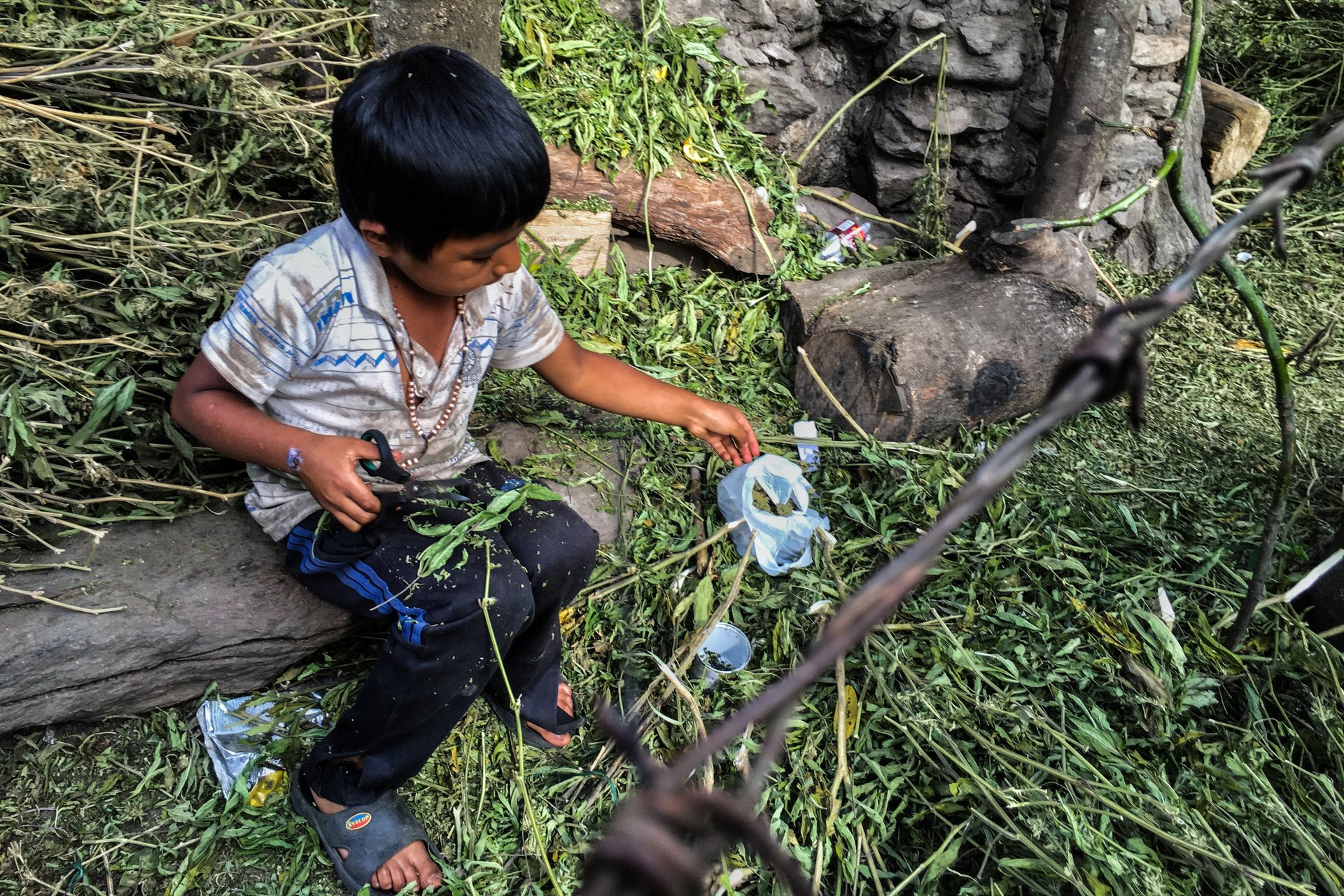
Colombian officials have a policy of declining interviews about the peace process in order to protect negotiations, but have said that once the agreements are signed there will be a transition period in which all Colombians will have a say on how they are implemented.
That means the government will work closely with communities to come up with the best methods to replace coca and marijuana. ”We are not going to leave you alone in your business,” said president Juan Manuel Santos during a presentation on the crop-substitution program last September. But illegal plantations will have to be destroyed, whether voluntarily or by force, because they are “the start of the drug trade chain with all its consequences of indolence and corruption,” he added.

Back in Toribío, locals are starting to feel the government’s presence. Now that the area is somewhat safe, workers from the electric utility have been able to go in to service lines and meter households that hadn’t been paying for their power.
Toribío residents worry that’s the only kind of official intervention they will see. During his stay, several told Enriquez they believe the government is more interested in finding ways to profit from them than helping them out. “Instead of sending help and resources, or holding a meeting with experts to get ideas on how to get this town out of the hole its been for the last 40 years, what they do is add more bills,” Robeiro, a 26-year-old marijuana grower, told him.
Without some tangible alternative to pot, added Robeiro, “there is no peace process.” Peasants southwest of Toribío clashed (Spanish) with the army after government workers showed up to pull out illegal plants in the area last November. One person was killed.
